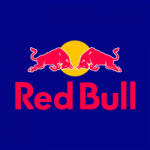
Red Bull PESTEL analysis facilitates a critical analysis of external factors affecting the energy drink manufacturer. The acronym stands for political, economic, social, technological, environmental and legal factors. Below is a brief analysis of the potential impact of each of these factors on Red Bull GmbH. Political Factors There are some political factors that affect Red Bull directly or indirectly. Specifically, a range of political factors affecting Red Bull directly include government stability or instability, levels of corruption and bureaucracy in markets, the role and freedom of press, home market lobbying initiatives and home market protectionism measures. Red Bull GmbH attempts to influence certain political factors and relevant rules and regulations via its lobbying efforts. For example, once US Food and Drug Administration (FDA) set “to investigate reports of illness, injury or death of people who took products marketed as “energy drinks” or “energy shots.”[1], “Red Bull North America has hired Podesta + Partners, the lobby firm run by power broker Heather Podesta, to “educate policymakers regarding energy beverages,” according to Senate records”.[2] Economic Factors The financial performance of Red Bull is a subject to a number of economic factors. Macroeconomic stability is one of the main economic factors affecting businesses in general and businesses operating in premium segment such as Red Bull GmbH in particular. For example, as a direct impact of the global economic crisis in 2009, Red Bull’s “net sales came in at EUR3.27bn, down 1.5% on the previous 12 months”[3]. The exchange rate between EURO and other currencies is another major factor with direct implications on Red Bull revenues. Specifically, a weak EURO throughout 2015 played a major role an increase in revenues by 15 per cent during the year, from EUR 5.110 billion to EUR 5.903 billion.[4] Moreover, additional economic factors that can affect Red Bull…
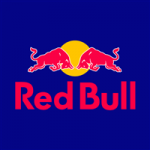
Red Bull SWOT analysis facilitates a critical assessment of strengths, weaknesses, opportunities and threats related to the energy drink manufacturer. The following table illustrates Red Bull SWOT analysis: Strengths 1. Market leadership in the global scale 2. Increasing popularity in emerging markets 3. Strong and visionary leadership by Dietrich Mateschitz 4. Solid financial position Weaknesses 1. Red Bull products considered to be unhealthy 2. Limited range of products 3. Expensive price 4. Concentrated production facilities Opportunities 1. Enhancing nutritional aspects of beverages 2. Further increasing presence in media via strategic collaborations 3. Engaging in product diversification 4. Increasing focus on CSR Threats 1. Negative health implications due to the consumption of Red Bull products 2. Increase in marketing costs 3. Further intensifying competition 4. Lawsuits against the company due to consumer health deterioration Table 1 Red Bull SWOT analysis Strengths Red Bull is sold in more than 169 countries and about 60 billion cans of Red Bull have been consumed so far. The company sold more than 5.9 billion of cans in 2015 alone.[1] Market leadership in the global scale is an indication of a considerable strength from the viewpoint of the brand equity and consumer loyalty. Red Bull is engaged in international market expansion with a focus on emerging markets in an aggressive manner. In 2015, Red Bull sales in Turkey, South Africa and India increased by 25 per cent, 19 per cent and 18 per cent respectively.[2] The current strategy of increasing presence in developing countries is set to contribute to the long-term growth prospects of the business. Dietrich Mateschitz is a proven visionary leader who had to deal with multiple obstacles during his pursuit of making Red Bull an undisputed market leader in energy drink segment around the globe. Innovative ideas of Dietrich Mateschitz for the…
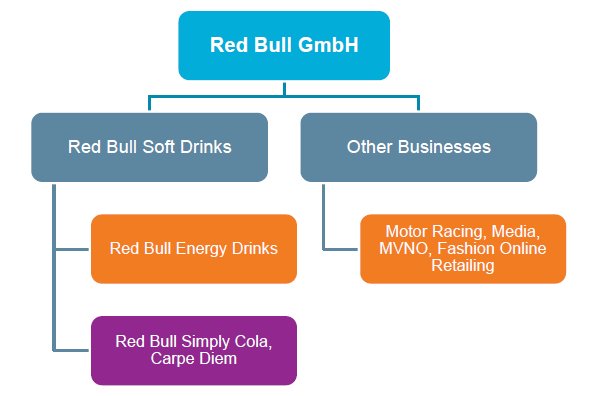
Red Bull organizational structure is divisional and the business is divided into two large businesses – Red Bull soft drinks and other businesses. It can be mentioned that divisional organizational structure “groups together those employees who are responsible for a particular product type or market service according to workflow”[1] As it is illustrated in Figure 1 below, other businesses division comprise motor racing, media, MVNO and fashion online retailing, whereas Red Bull soft drinks division is further divided into two sub-divisions: Red Bull energy drinks and Red Bull Simply Cola and Carpe Diem. Figure 1 Red Bull organizational structure The choice of divisional organizational structure by Red Bull provides the business with a set of advantages that include achieving a great focus upon a single product or service. Additionally, divisional structure allows building “a common culture and esprit de corps that contributes both to higher morale and a better knowledge of the division’s portfolio”[2]. Red Bull founder and CEO Dietrich Mateschitz subjects Red Bull organizational structure to certain changes in a systematic manner in order to reflect changes in the external environment. It is important to clarify that Red Bull organizational structure is not a typical divisional structure in a way that it also integrates certain elements of hierarchical structure in specific programs. For example, as it is illustrated in Figure 2 below, Red Bull wings program that involves distribution of free samples of products contains 6 layers of management from the team member to the program leader. Figure 2 Red Bull Wings program structure Red Bull GmbH Report comprises a comprehensive analysis of Red Bull. The report illustrates the application of the major analytical strategic frameworks in business studies such as SWOT, PESTEL, Porter’s Five Forces, Value Chain analysis and McKinsey 7S Model on Red Bull. Moreover, the report contains analyses of Red Bull’s marketing strategy and discusses…

Red Bull leadership team is headed by Dietrich Mateschitz, its co-founder and long-time CEO, since its establishment in 1987. Visionary and effective leadership style of Dietrich Mateschitz is one of the major factors that fuelled the rapid growth of the business to the point of its current leadership position in the global scale. Dietrich Mateschitz had to challenge the status quo and sceptical views towards the business multiple times during his tenure as Red Bull leader. It has been noted that Dietrich Mateschitz “eschews bureaucracy and famously rejected the recommendations of a market research report which advised to him to not even try to launch an energy drink”[1]. Similar to Richard Branson of Virgin, Dietrich Mateschitz has succeeded in personification of the business and performed the role of brand ambassador in an efficient manner. Thanks to his personal interest in extreme sports and relentless drive to succeed, Mateschitz was able to create a market for Red Bull when none existed and associated the brand with extreme sports and high performance. Currently, Red Bull leadership is faced with the challenges of addressing the claims and instances related to negative health implications of Red Bull consumption. It can be argued that the relevance of this specific channel is greater than ever before due to increasing level of consumer health-awareness. Another leadership challenge in Red Bull relates to a potential leadership succession issue. To be more specific, there is no there no evident candidate to take over 72-year-old Dietrich Mateschitz the leadership role at Red Bull and such a ambiguity may threaten the company’s post-Mateschitz growth prospects. Red Bull GmbH Report constitutes a comprehensive analysis of Red Bull business strategy. The report illustrates the application of the major analytical strategic frameworks in business studies such as SWOT, PESTEL, Porter’s Five Forces, Value Chain…
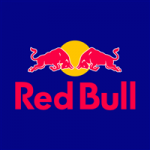
Red Bull business strategy is to associate the brand with a lifestyle of an adventurous spirit. An extensive and aggressive marketing is placed at the core of Red Bull business strategy. The brand’s marketing communication message – ‘Red Bull gives you wings’, is constantly communicated to the target customer segment via multiple marketing communication channels in an integrated manner. Red Bull business strategy is product differentiation and Red Bull is a premium energy drink. Accordingly, Red Bull energy drinks are generally more expensive compared to other energy drinks such as Monster, Rockstar, Lucozade, NOS and Amp. Customers are charged additionally for augmented benefits of Red Bull consumption that include the perception of leading a full and active lifestyle and enhancing mental and physical performance. According to Red Bull business strategy, its competitive advantages rely on the following points: First mover advantage in the energy drink sector in developed countries. Red Bull founder Dietrich Mateschitz was the first to introduce energy drinks to the west by adjusting the taste of Thai drink Krating Daeng. Unique and sweet taste of the energy drink. The Red Bull flavouring is still produced in Bangkok and exported into manufacturing plants internationally. An appealing brand image associated with extreme sports. The company owns a number of sports teams such as RB Leipzig,FC Red Bull Salzburg, Red Bull Brasil and New York Red Bulls to reinforce the brand image. Effective marketing strategy. This integrates Red Bull TV online channel, The Red Bulleting online magazine and about 150 people employed for content marketing and media strategy[1] It has to be noted that Red Bull GmbH is increasingly becoming a media company with the launch and acquisitions of increasing numbers of media businesses. This strategy serves to further strengthen Red Bull brand image via communicating relevant marketing messages to the…
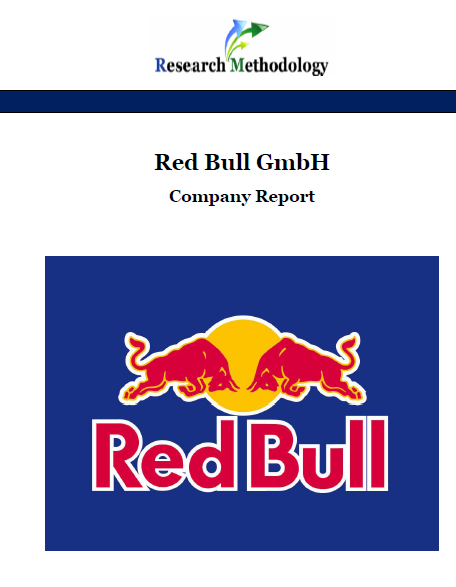
Red Bull GmbH is a manufacturer of one of the most popular energy drinks Red Bull based in Austria. The company has been founded by Dietrich Mateschitz in the mid 1980’s and the first Red Bull Energy Drink was sold in Austria on April 1, 1987. Today, Red Bull beverages are sold in more than 169 countries and about 60 billion cans of Red Bull have been consumed so far. In 2015 alone, more than 5.9 billion cans were sold, which is an increase of 6.1 per cent compared to the previous year. In 2015, Red Bull GmbH revenues amounted to EUR 5.903 billion, a 15.5 per cent increase compared to the previous year. The company employs 10,997 people in 169 countries. Red Bull pursues product differentiation business strategy and the company differentiates its energy drinks according to its perceived positive effects in terms of enhancing physical and mental performance. Red Bull brand possesses solid competitive advantages in terms of the first mover advantage, high scope of brand recognition, an impressive level of profitability and effective marketing strategy. The marketing message of the brand ‘Red Bull gives you wings’ is effectively communicated to the target customer segment via multiple communication channels in an integrated manner. Along with its own media platforms, Red Bull owns a set of sports teams such as RB Leipzig, FC Red Bull Salzburg, Red Bull Brasil, New York Red Bulls, Red Bull Racing and Scuderia Toro Rosso. Despite the phenomenal success of the company, Red Bull has a set of weaknesses that include its overly expensive prices, limited range of products, portfolio of products that are rightly considered as unhealthy and concentrated production facilities. Red Bull GmbH Report contains the application of the major analytical strategic frameworks in business studies such as SWOT, PESTEL, Porter’s Five…
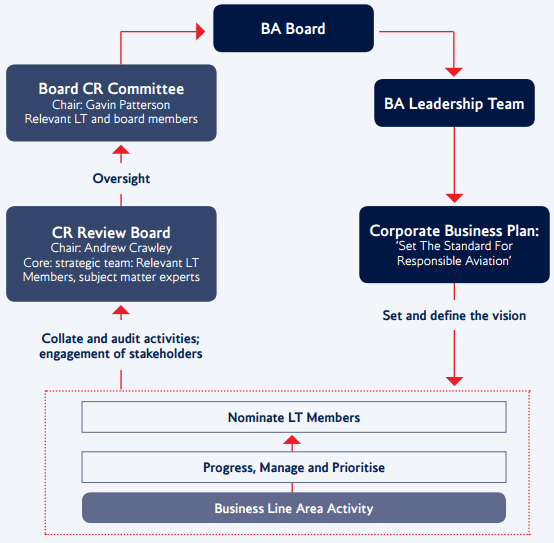
British Airways CSR programs focuses on the following three core areas: Climate Action Noise and Air Quality Resource Management British Airways SCR strategy relies on four primary risk management criteria when measuring the impacts of environmental risks of business operations: Risk impact Probability Velocity Timeframe British Airways Corporate Responsibility Committee chaired by non-executive director – Gavin Patterson deals with the issues of sustainability and it is composed as illustrated in figure below: Structure of British Airways Corporate Responsibility Committee The company releases Environmental Performance Report annually and it includes the details of CSR programs and initiatives engaged by the company. Table 3 below illustrates highlights from the latest report for 2015: Categories of CSR activities British Airways Performance Supporting local communities The airline is committed to minimizing the noise impact on local communities. British Airways is working towards an overall reduction in average noise per flight by 15 per cent by 2018 compared to 2008 Educating and empowering workers The company has world class training academy full-scale cabin mock-ups, door simulators, a fire-ground and full height evacuation slides British Airways’ Community Learning Centre has welcomed around 100,000 people since opening in 1999 Labour and human rights The airline’s potential suppliers are required to complete Corporate Social Responsibility (CSR) questionnaire. This insures that their working conditions complies with International Labour Organisation standards Employee health and safety The airline’s Safety Committee systematically ensures that appropriate safety resources and procedures are in place Gender equality and minorities No relevant information found Environment a) energy consumption b) water consumption c) recycling d) CO2 emissions British Airways is striving for 20 per cent reduction in energy usage by 2020 compared to 2013 No relevant information found British Airways aims to achieve 60 per cent recycling by 2015 at its main bases of Heathrow…
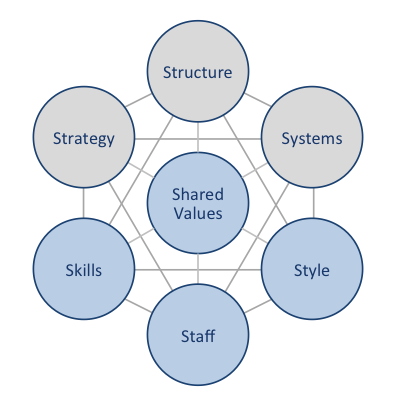
British Airways McKinsey 7S framework illustrates how seven individual elements of the airline business are aligned to increase the overall effectiveness of the business. McKinsey 7S divides elements into hard and soft groups. Strategy, structure and systems represent are considered as hard elements, whereas shared values, skills, style and staff represent soft elements. As it is illustrated in the figure below, shared values are positioned at the core of British Airways McKinsey 7S framework, since shared values guide employee behaviour with implications in their performance. British Airways McKinsey 7S Framework Hard Elements Strategy. British Airways pursues the business strategy of service differentiation. Specifically, the airline differentiates its services via an extensive reliance on digitalization and information technology and a high level of customization of service provision. An aggressive international market expansion is another important element of British Airways business strategy and in 2016 alone the airline company is expected to fly to more than a dozen new routes.[1] Structure. British Airways is owned by International Airline Group (IAG), the largest airline group in Europe that also owns Iberia, Vueling and Aer Lingus. British Airways organizational structure is hierarchical reflecting the large size of the business. The new CEO Alex Cruz is expected to introduce de-layering initiatives into British Airways organizational structure as a part of his wide-scale cost-cutting measures. Systems. Apart from the standard set of organizational systems such as employee recruitment and selection system, performance appraisals system, quality control system, complaint handling system and others, British Airways also maintains a number of industry-specific systems. These include, but not limited to passenger check-in system, baggage handling system, in-flight entertainment system and others. British Airways Report contains a detailed discussion of British Airways McKinsey 7S framework. The report also illustrates the application of the major analytical strategic frameworks in business studies such…
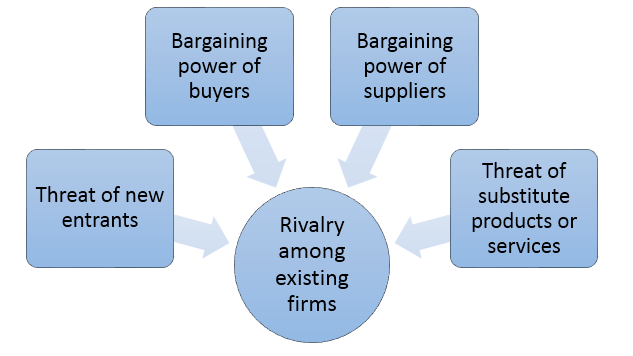
British Airways Porter’s Five forces analysis is an analytical framework developed by Michael Porter (1979)[1]. The framework distinguishes between five individual forces that shape the overall extent of competition in the industry and studies them. These forces are represented in Figure 1 below: Figure 1 British Airways Porter’s Five Forces Threat of substitute services for an airline is not significant. It has to be clarified that although there is a substitution for air travel, represented by other modes of transportation such as vehicles and sea transports, air travel remains as the fastest form of travel. From this point of view, it can be argued that there is no substitution to airplanes to travel thousands of miles in a matter of few hours. At the same time, rapidly developing internet-based information and communication technologies represent indirect substitution for air travel. For example, an intensive development of communication technologies during the last decade presented the opportunities of real-life video conferencing, thus eliminating the necessity for long-distance travels for business and other meetings. Threat of new entrants into the airline industry is low. Major capital requirements is one of the most significant barriers for new market entrants. As it is illustrated in Figure 2 below, the cost of Boeing aircrafts, one of the most popular airplane brands, can reach USD 400 million and there are no aircraft from reputable manufacturers with a price tag of less than USD 70 million. Figure 2 Average prices for Boeing aircraft in 2015, by type (in million U.S. dollars)[2] Lack of access to distribution channels represents another significant barrier for new market entrants into the airline since. This is because it may prove to be difficult to find free slots and runways in the major international airports such as Heathrow Airport in UK and JFK airport in…
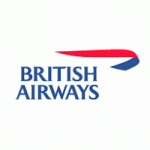
British Airways marketing communication mix integrates the elements of print and media advertising, sales promotions, events and experiences, public relations and direct marketing in the manners discussed below. Advertising British Airways uses print and media advertising as an important part of its marketing strategy. In one of the most notable cases, in January 5, 2016, the airline took over all of the advertising space in popular Time Out London travel magazine as part of an ambitious marketing campaign.[1] British Airways television ads are marked with appeal to basic and important human emotions such as love, kindness and excitement. For example, ‘Fuelled by Love’ video clip advertisement directed by Neeraj Ghaywan tells the tale of Helena Flynn, a flight attendant who falls in love with India. “The ad is full of small moments of human kindness—from helping an old woman put on her socks to inviting a stewardess in a strange land into your home and heart”[2] Importantly, British Airways also sells its own advertising space on its online and offline platforms. The airline’s online advertising platform is its official website ba.com, whereas offline advertising platforms include traveller boarding passes and advertising spaces in 54 British Airways lounges worldwide. Moreover, viral marketing is being increasingly integrated into British Airways marketing strategy. The airline frequently taps into the sentimentality of many expatriates’ desires to visit their faraway homelands and families[3]. Successful viral marketing campaigns ‘Visit Mum’ and ‘The Welcome of Home’ can be mentioned to justify this point. Sales Promotion British Airways uses sales promotions during festive seasons and other occasions. Specifically, the airline uses the following forms of sales promotions: 1. Money off coupons. Various vendors, travel companies and websites such as retailmenot.com, coupons.com, couponcabin.com and fyvor.com offer discount coupons for British Airways travel tickets. However, British Airways does not offer…
